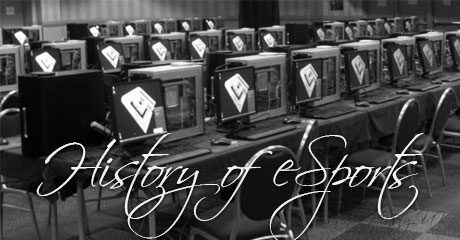Introduction
Video games are thrilling- for those who play and those who watch; gamers plan and strategise their play so that they can overpower their opponents. Spectators wait LED screens with bated breath, applaud and empathise with teams just as they would in a regular football or tennis match. eSport appears to have come of age and is being recognised as “excellent and exhilarating spectator sports.”
Arcade and console games
In its most primitive form, friends played video games and challenged each other to better their highest scores. Slowly the game evolved and became more structured in that tournaments were being organised everywhere. The first gaming competition was held at Stanford University in 1972, where students competed in the video game- Spacewar. The winner was entitled to a Rolling Stone magazine’s annual subscription – a far cry from the millions of dollars that are being offered today.
The first space invaders tournament was organised by Atari in 1980, and so great was its popularity that it attracted tens of thousands of participants. The foundation for eSports was laid, and the early 1990s saw arcade and console games being sponsored for world championships.
PC gaming
With Internet connectivity, the popularity of PC games rose, and the late 90’s sawed the emergence of the Red Annihilation tournament. “Quake”, generally considered as the first eSports game, was witnessed by more than 2000 people. This set the ball rolling- the first significant gaming league was formed and tournament ‘Prize Money’ was offered for the first time. Subsequently, many more associations were created, and new competitions announced.
While all this did give a fillip to eSports, the emergence of real-time strategy (RTS) games was a game turner. The concept and focus shifted to new areas- planning and policy, which offered limitless potential. This pushed eSports to a new high, and it started getting the popularity and recognition that it deserved.
eSports flourishes
With the turn of the century, two major international tournaments were launched, and that paved the way for the launching of the largest and most successful eSport leagues- the Major League Gaming. It was hailed widely for it featured many games in different genres and most importantly put up ‘prize pools’- in 2013 gamers received more than $170,000 in the form of prizes. This Major League also had another first to its credit- it was televised in North America on the USA network.
Other tournaments emerged- notably Dreamhack and the Global StarCraft II League (GSL). The number of online viewers has been increasing exponentially since then comparing favourably with the number of viewers attending real sporting events, and the trend is expected to continue. The league of legends, considered the most famous video game world over, is an Online, Multiplayer Battle Arena that attracts player from all over the world.
The Future for eSports
There’s no doubt that eSports are generating excitement and challenges for the fans and players respectively, but still, has a way to go before it gains recognition in mainstream culture.

